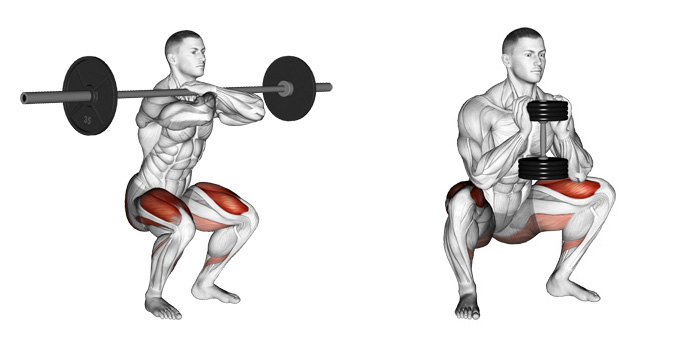Learn how providing choice encourages consistency when providing exercise-based treatment and training plans.
The Short Version:
Alternates are replacement exercise options options to allow users to adjust exercises based on their particular situation, primarily based on the equipment that is available. When a user is assigned a plan, some exercises will have the ability to be changed to similar exercises (with similar effects) but with different equipment.

For example, if a 1 Arm Press exercise is prescribed, a user may have the ability to change to a Barbell Bench Press or even a Push Up based on their equipment availability. This allows for consistency in training regardless of circumstance, while avoiding the randomness of substituting generic exercises or activities that an individual may not need.
Key Use Cases for Alternates:
- Equipment Requirements
- Effort/Motivation
- Autonomy
- Pain/Injury
The Long Version:
Perhaps the most important factor that can enhance or diminish results is the ability to perform training plans consistently. Oftentimes we can forget our athletes, soldiers, or patients are also human beings with other responsibilities, interests, and challenges. Whether they struggle with irregular sleep, travel schedules, or stress from their everyday life, it's easy to get off track. The Sparta Planning feature utilizes autoregulation to progress training plans allowing for optimal progression for each individual based on merit. Another important feature set that makes Sparta Planning adaptable is what we term Alternates.
Alternates can be utilized when specific activities or exercises cannot or should not be performed. Whether an individual is currently experiencing pain or fatigue, or simply the equipment isn't available, individuals will often skip or replace exercises in their training plan with something else. Historically, the decision might be to simply ignore an exercise, or jump on an exercise bike, or do some crunches or wall sits, or perhaps just stretch or foam roll. However, these are not true alternates but just randoms, because they do not make progress towards the plan. Consistency is arguably more important than the actual plan, but we often veer off track due to many circumstances. Sometimes an individual only has access to a hotel gym or even no equipment at all. How do you still provide a stimulus that fits in the plan?
Alternates are options to allow users to adjust exercises based on their particular situation, primarily based on the equipment that is available. When a user is assigned a plan, some exercises will have the ability to be changed to similar exercises (with similar effects) but with different equipment.

For example, if a Front Squat exercise is prescribed, a user may have the ability to switch to a Goblet Squat or even a Bodyweight Squat based on their equipment availability. This allows for consistency in training regardless of circumstance, while avoiding the randomness of substituting generic exercises or activities that an individual may not need.
The simplest example of alternates as explained above is adapting to equipment needs, but they can be utilized in a variety of other ways. Alternates are also important during times when individuals feel a lack of motivation. This is common in the sporting world where individuals are often highly motivated to train during the offseason, but increased stress and time demands during the in-season make sticking to a plan more challenging. An athlete sometimes just doesn't have it in them to perform a specific exercise and that is understandable, we can use an alternate get a similar stimulus and stay on the correct path to moving better.
There is a growing body of literature supporting autonomy (freedom from external control or influence) or "the power of choice" as perhaps a missing component to physical training plans. Alternates can also create a sense of autonomy by giving each individual options or choices in their training. A final example of utilizing alternates is when unforeseen pain or injury occurs. The alternate is still based on what an individual needs, but if any pain or uncertainty is present, we check down to a movement of lesser intensity. This concept of alternates is the first part of a response to pain or injury; maintaining a targeted training stimulus and avoiding randomness.
Key Use Cases for Alternates:
- Equipment Requirements
- Effort/Motivation
- Autonomy
- Pain/Injury
